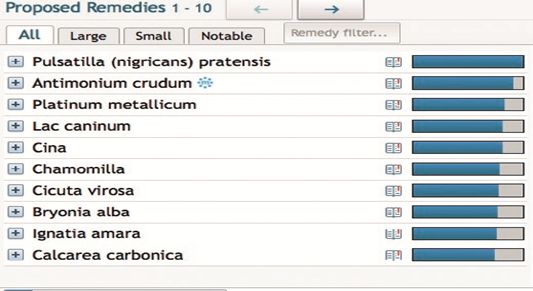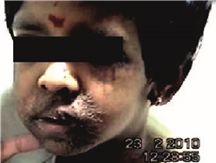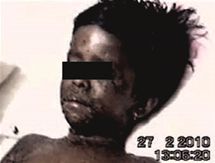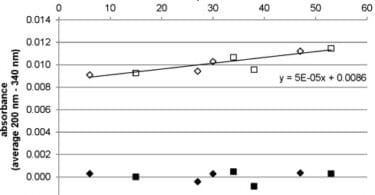Centre for Classical Homeopathy, Vijayanagar, Bangalore, India;
University of the Aegean, International Academy of Classical Homeopathy, Alonissos, Northern Sporades, Greece
Complement Med Res 2017;24:117–121 Published online: October 30, 2017 DOI: 10.1159/000481819
Keywords
Embryonal carcinoma · Immature teratoma ·
Homeopathic management of cancer
Summary
Background: Embryonal carcinoma with immature teratoma is a cancer with poor prognosis if the expression levels of biological markers are very high. In such a case, after surgical removal of the tumor, homeopathic treatment resulted in maintenance of the cancer-free state for over 6 years.
Case Report: This is the case of a 3-year-old Indian girl diagnosed with embryonal carcinoma with immature teratoma (after surgery), treated and followed up for over 6 years. She was treated on the basis of the principles of classical homeopathy and has stayed free of cancer for 6 years now.
Discussion: The cancer marker expression levels dropped while the girl developed severe skin eruptions, which is in accordance with the laws of classical homeopathic treatment. Although other examples of successful homeopathic treatment in severe pathologies exist, further confirmatory studies are needed on a large scale.
© 2017 The Author(s). Published by S. Karger GmbH, Freiburg
Schlüsselwörter
Embryonales Karzinom · Unreifes Teratom ·
Homöopathische Krebsbehandlung
Zusammenfassung
Hintergrund: Ein embryonales Karzinom mit einem unreifen Teratom ist eine Krebsart mit einer schlechten Prognose, wenn sehr hohe Expressionslevel der biologischen Marker vorliegen. In solch einem Fall führte eine homöopathische Behandlung nach der chirurgischen Entfernung des Tumors zur Aufrechterhaltung des krebsfreien Zustands für mehr als 6 Jahre. Fallbericht: Dies ist der Fall eines 3-jährigen indischen Mädchens, das (nach Operation) die Diagnose eines embryonalen Karzinoms mit einem unreifen Teratom erhielt und das mehr als 6 Jahre lang behandelt und nachbeobachtet wurde. Sie wurde gemäß den Prinzipien der klassischen Homöopathie behandelt und ist jetzt seit 6 Jahren frei von Krebs geblieben. Diskussion: Die Expressionslevel der Krebsmarker fielen, während das Mädchen schwere Hautausschläge entwickelte, was mit den Gesetzen der klassischen homöopathischen Behandlung in Einklang steht. Obwohl es noch andere Beispiele für eine erfolgreiche homöopathische Behandlung bei schwerwiegenden Pathologien gibt, sind weitere, groß angelegte Studien, die dies untermauern, notwendig.
Introduction
Germ cell tumors consist of primitive cell types in different stages of differentiation. Embryonal carcinoma (EC) consists of poorly differentiated cells [1] with a tendency to spread fast. When coupled with other benign types (e.g. mature teratoma), mutation into malignancy is regularly found [2]. Immature teratoma is rare among germ cell tumors and has the tendency to spread aggressively [3]. ECs exhibit a predominantly maternal genetic imprinting [4, 5] and recurrence is as high as 33% after surgery and chemotherapy [6]. Germ cell tumors secrete biological markers that serve to monitor the treatment results and to detect subclinical recurrences.
Table 1. Evolution of the case after the first remedy
Table 2. |
||||||||||||||||||||||||||||||||||||
[3]. ECs exhibit high levels of human chorionic gonadotropin (HCG) in the blood and also α-fetoprotein (AFP). The presence of high levels of AFP and a bigger size of the tumor in the case of a germ cell tumor herald a very bad prognosis. Even with the latest, better prognosis reports, the initial surgery needs to be followed up with adjuvant chemotherapy to ensure complete clearance of the cancerous cells [3, 7].
Case Report
A 3-year-old girl child with EC and immature teratoma underwent surgical removal of the tumor in the ovary, after which the family, when given chemotherapy as the next option of treatment, refused and opted for homeopathic treatment. The initial anamnesis of the case took place on August 13, 2009.
The mother had detected a large swelling in the abdomen of the child, which was revealed on the ultrasound scan to be a large ovarian tumor of suspected ovarian neoplasm, measuring 7.1 × 1.3 × 2.4 cm (dated June 22, 2009).
This tumor was excised and biopsied. The biopsy showed a malignant mixed-germ cell tumor consisting of immature teratoma and EC (70% and 5%, respectively) (dated July 29, 2009). The laboratory findings, dated July 23, 2009, prior to removal of the tumor were:
- hemoglobin (Hb): 9.7 g%
- erythrocyte sedimentation rate (ESR): 38 mm/h
- total HCG: 956.3 mIU/ml (normal: <1 mIU/ml) – AFP: 1,336 mg/ml (normal: <10 mg/ml)
- lactose dehydrogenase (LDH): 281 U/l (normal) Past history: She suffered from recurrent colds and adenoids.
Family history: On the father’s side of the family there were many genetic disorders and
congenital disorders. The mother reported that she had had tremendous stress during the pregnancy as she had to separate from her husband during that time, which ultimately ended in divorce. Further, the mother has recently been diagnosed with breast cancer (in 2015).
Presenting symptoms available for homeopathic repertorization were: The girl ground her teeth in her sleep, she had increased perspiration during sleep, and her tongue was furrowed in the center; her thirst was very much decreased. She craved cold milk and bananas and had an aversion to eggs.

Fig. 1. Repertorization results during skin eruptions.

Fig. 2. Progression of the skin eruptions from the face down to the body (fig. 2–4).

Fig. 3. Progression of the skin eruptions from the face down to the body (fig. 2–4).

Fig. 4. Progression of the skin eruptions from the face down to the body (fig. 2–4).
In the homeopathic Materia Medica, these symptoms very clearly constitute the picture of a single remedy [8]. The assessment regarding her health was that, although she had the diagnosis of cancer and her cancer marker levels were very high to begin with, she exhibited frequent acute infections and the immune system was strong enough to put up a clear picture of a homeopathic remedy, implying that she was on a better level [9].

Fig. 5. Latest picture of the girl.
At this level, the prescription strategy is based on the totality of symptoms, which includes the sum of all the individualistic symptoms of the patient. Vithoulkas’ [10] expert system of the radar software was used for repertorization. The remedy given was Tuberculinum 14C, 1 dose per day for 1 month. Follow-up consultations of the first part of the treatment are listed in table 1.
The girl received only homeopathic treatment.
During 5 months of treatment with Tuberculinum in rising C potencies, the child underwent several acute infections of the upper respiratory tract, which stopped when she developed skin eruptions around the mouth. The eruptions were cracked, crusty, and painful.
Placebo 3 times a day for 5 days was prescribed, as we saw a stable situation in cancer markers. The beginning of a skin eruption in cases with deep affections is always a good sign according to the theory and the idea of a hierarchical organization of the human organism [9, 11]. One day later, though, the eruptions took a dangerous shape and were threatening to spread. Thus, they needed to be treated. The symptoms on February 24, 2010, considered for repertorization were as given in table 2.
The repertorization showed Pulsatilla as the remedy (fig. 1): Pulsatilla 30C was given. Follow-up of the skin treatment and its process are summarized in table 3 and in figures 2–4. The child has now been observed for 6 years, with periodical scans and blood tests as surveillance for relapse of cancer. There has been no evidence, so far, of any cancerous activity in the body, and the girl has stayed well.
She required occasional treatment for acute infections, which over time have become rarer. The reports of the 6 years are given in table 4. The latest photograph of the girl is provided as figure 5.
Embryonal Carcinoma with Immature Teratoma Complement Med Res 2017;24:117–121 119 Table 3. Evolution of the case after the second remedy
| Date | Symptoms | Prescription | Remarks |
| 25/02/2010 | immediately after application of the remedy, the swelling of the eyelid and mouth became less; the child could open the mouth; the dangerous areas are clearing up while the lower parts are becoming affected | Pulsatilla 30C 2 doses a day | clearly the case is better (downward movement of the lesions as they clear up from above), but it is still severe, thus needing repetition |
| 26/02/2010 | skin lesions shifting to neck and downwards; itching all over the body, more in the genital area; fever of 101.8 F; appetite improved; asks for food; thirst for ½ a glass in a day; sleepless; no stools since last day | Pulsatilla 200C, every 4 h | fever onset indicates active immune system, but care needs to be taken as the skin lesions are extensive and chances of septicemia must be ruled out; this state requires frequent repetition to assist in recovery |
| 27/02/2010 | temperature 100.2 F; skin peeling on abdomen and back; appetite good; asks for oranges | Pulastilla 200C 3 doses a day | reduced fever and healing skin: very good development, so dosage reduced |
| 28/02/2010 | shivering and startling observed in the child; food intake a little reduced; thirst remains the same; she asks for fruits; skin peeled on genitals; she cries while passing stools | Pulsatilla 200C only if fever rises | at this stage, we must observe if the immune system can take care of itself, by observing fever; therefore, remedy repeated only if required |
| 02/03/2010 | sleep was good; normal skin appearing in some parts; lesions descended to feet; fever had risen to 102 F in the night (upon giving the Pulsatilla dose); now temperature 98 F; reddish gums; stools still hard; trembling when standing | placebo | remedy repeated only when required |
| 04/03/2010 | new skin appearing further | placebo | healing skin and better immune status warrants no remedy |
| 06/03/2010 | skin peeling off gradually and new skin appearing; swelling in right eye; generally well | placebo | |
| 08/03/2010 | skin peeling better; generally better | placebo | |
| 13/03/2010 | drastic changes in the whole body; scar marks are disappearing as well; appetite improved | placebo | |
| 19/03/2010 | swelling of tonsils; mild cough | Pulsatilla 200C
2 doses a day for 2 days |
now the child is out of danger and is showing signs of a common cold; as a rule, the previous remedy must be repeated |
| 27/03/2010 | swelling better; mild cough | Pulsatilla 200C 2 doses per day for 3 days | |
| 10/04/2010 | skin is better; tonsils are still swollen | Pulsatilla 200C 2 doses a day for 10 days | |
| 25/04/2010 | generally well; occasionally complains of pain in abdomen | placebo | from here on, the case was treated as and when required for the onset of common colds alone |
| Date Report |
| 06/02/2012 CT scan shows bilateral lymphadenopathy, but otherwise normal condition
11/02/2012 AFP: 1.78 mIU/ml 01/04/2013 CT scan shows normal condition; AFP: 1.03 mIU/ml 26/07/2014 ultrasound scan shows normal condition 28/07/2015 ultrasound scan shows normal condition |
| CT = Computed tomography, AFP = α-fetoprotein. |
Table 4. Imagery and blood tests follow-up after homeopathic treatment
Discussion: Although it may be difficult to achieve such a response in all cases with such a poor prognosis, this case report still demonstrates the potential that homeopathy has as a treatment modality for serious pathologies. There have been other case reports where the pathological state was very advanced and yet homeopathic treatment was successful [12]. This is probably because the patients, despite their advanced pathologies, were still in a better condition of health. In such cases, homeopathic medicines can elicit favorable reactions from the immune system [9, 11].
The follow-up has lasted for over 6 years, during which time the dramatic skin eruptions also responded well to homeopathy, leaving the girl in an overall healthier state. Table 3. Evolution of the case after the second remedy
Date Symptoms Prescription Remarks
25/02/2010 immediately after application of the remedy, the swelling of the eyelid and mouth became less; the child could open the mouth; the dangerous areas are clearing up while the lower parts are becoming affected Pulsatilla 30C 2 doses a day clearly the case is better (downward movement of the lesions as they clear up from above), but it is still severe, thus needing repetition
26/02/2010 skin lesions shifting to neck and downwards; itching all over the body, more in the genital area; fever of 101.8 F; appetite improved; asks for food; thirst for ½ a glass in a day; sleepless; no stools since last day Pulsatilla 200C, every 4 h fever onset indicates active immune system, but care needs to be taken as the skin lesions are extensive and chances of septicemia must be ruled out; this state requires frequent repetition to assist in recovery 27/02/2010 temperature 100.2 F; skin peeling on abdomen and back; appetite good; asks for oranges
Pulastilla 200C 3 doses a day reduced fever and healing skin: very good development, so dosage reduced
28/02/2010 shivering and startling observed in the child; food intake a little reduced; thirst remains the same; she asks for fruits; skin peeled on genitals; she cries while passing stools Pulsatilla 200C only if fever rises at this stage, we must observe if the immune system can take care of itself, by observing fever;
therefore, remedy repeated only if required 02/03/2010 sleep was good; normal skin appearing in some parts; lesions descended to feet; fever had risen to 102 F in the night (upon giving the Pulsatilla dose); now temperature 98 F; reddish gums; stools still hard; trembling when standing placebo remedy repeated only when required 04/03/2010 new skin appearing further placebo healing skin and better immune status warrants no remedy
06/03/2010 skin peeling off gradually and new skin appearing; swelling in right eye; generally well placebo
08/03/2010 skin peeling better; generally better placebo
13/03/2010 drastic changes in the whole body; scar marks are disappearing as well; appetite improved placebo
19/03/2010 swelling of tonsils; mild cough Pulsatilla 200C 2 doses a day for 2 days now the child is out of danger and is showing signs of a common cold; as a rule, the previous remedy must be repeated
27/03/2010 swelling better; mild cough Pulsatilla 200C 2 doses per day for 3 days
10/04/2010 skin is better; tonsils are still swollen Pulsatilla 200C 2 doses a day for 10 days
25/04/2010 generally well; occasionally complains of pain in abdomen placebo from here on, the case was treated as and when required for the onset of common colds alone
Date Report
06/02/2012 CT scan shows bilateral lymphadenopathy, but otherwise normal condition
11/02/2012 AFP: 1.78 mIU/ml
01/04/2013 CT scan shows normal condition; AFP: 1.03 mIU/ml
26/07/2014 ultrasound scan shows normal condition
28/07/2015 ultrasound scan shows normal condition
CT = Computed tomography, AFP = α-fetoprotein.
Table 4. Imagery and blood tests follow-up after homeopathic treatment
Conclusion
This case report, as far as the authors’ knowledge goes, is the first of its kind where a severe pathology has been shown to respond and stay clear for over 6 years. The dramatic nature of the case and the response to treatment make it necessary to further investigate the possibilities of homeopathic treatment in such severe pathological conditions.
Author’s Contributions
S.M. wrote the manuscript, M.M. was the homeopathic physician who treated the case and contributed the complete details of analysis and prescription. G.V. was the guide under whose directions and ideas the manuscript was prepared. All authors have read and approved the final manuscript.
References
- Cotran R, Kumar V, Collins T: Robbins Pathologic Basis of Disease, ed 6. Philadelphia, W.B. Saunders, 1998, pp 1018–1024, 1073–1075.
- Bass P: Germ Cell Tumors. Online Medical Encyclopedia. Rochester, University of Rochester Medical Center, 2017.
- Rana S, Kaur Gill M, Satarkar R, Sangwaiya A, Singh P: Immature teratoma with embryonal carcinoma; a rare malignant mixed germ cell tumor in a 13-year-old girl.Iran J Pathol 2016; 11: 66–70.
- Mutter G: Role of imprinting in abnormal human development. Mutat Res 1997; 396: 141–147. 5 Jirtle R: Genomic imprinting and cancer. Exp Cell Res 1999; 248: 18–24.





